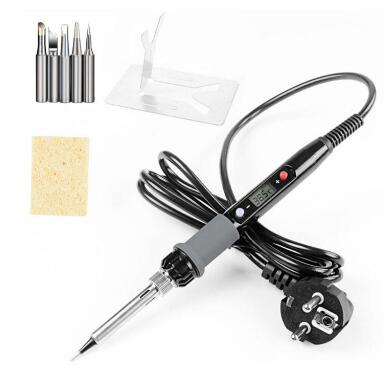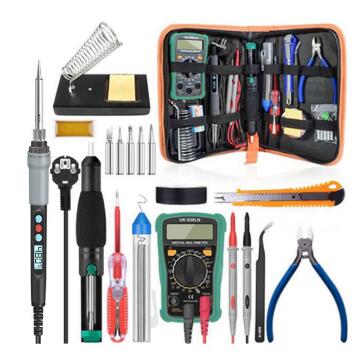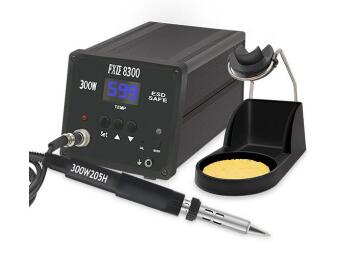Introduction to electric soldering iron structure
Electric soldering irons are divided into external heating type and internal heating type
External heating electric soldering iron is composed of soldering iron head, soldering iron core, shell, wooden handle, power lead, plug, etc. Because the soldering iron head is installed in the soldering iron core, it is called external heating electric soldering iron. The soldering iron core is the key component of the electric soldering iron. It is formed by winding the electric heating wire on a hollow porcelain tube in parallel. The mica sheet in the middle is insulated, and two wires are led out to connect with 220V AC power supply. There are many specifications of external heating electric soldering iron, including 25W, 45W, 75W, 100W, etc. the higher the power, the higher the temperature of the soldering iron head.
The internal heating electric soldering iron is composed of a handle, a connecting rod, a spring clamp, a soldering iron core and a soldering iron head. Because the soldering iron core is installed in the soldering iron head, it has fast heating and high heat utilization rate. Therefore, it is called internal heating electric soldering iron. The common specifications of internal heating electric soldering iron are 20W and 50W. Because of its high thermal efficiency, 20W internal heating electric soldering iron is equivalent to about 40W external heating electric soldering iron. The rear end of the internal heated electric soldering iron is hollow, which is used to be sleeved on the connecting rod and fixed with a spring clamp. When the soldering iron head needs to be replaced, the spring clamp must be pulled out first, and the front end of the soldering iron head must be clamped with pliers and pulled out slowly. Remember not to use too much force to avoid damaging the connecting rod.













